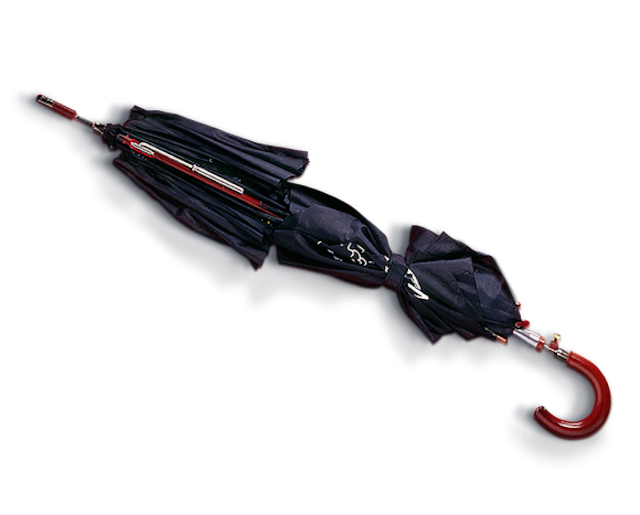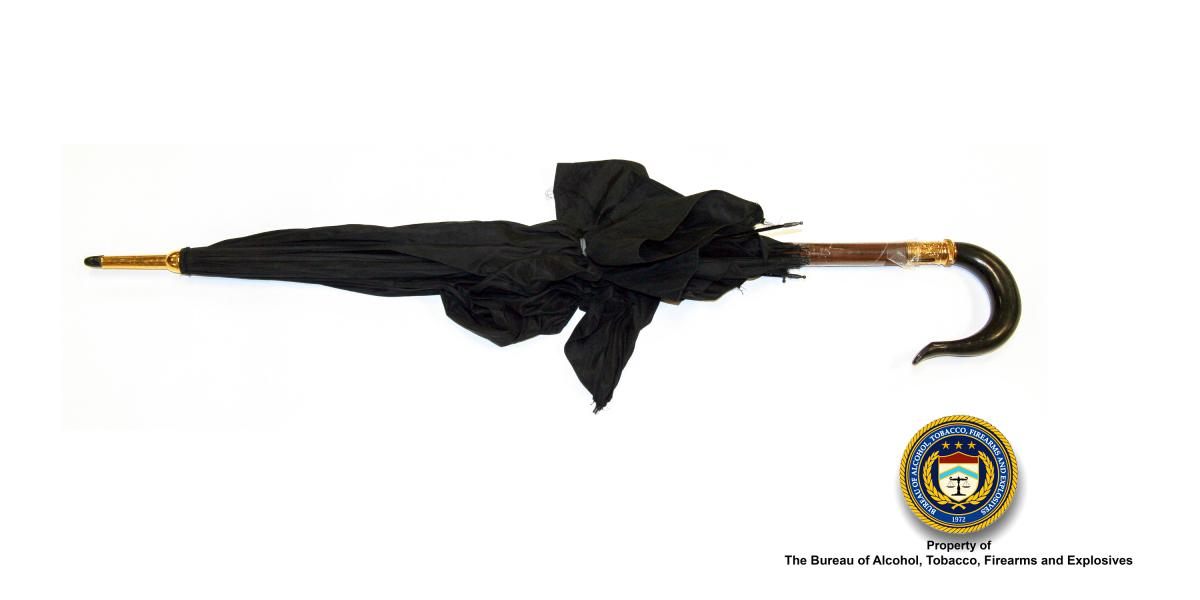The True History of the Umbrella Gun, a Surprisingly Serious Weapon
Once used to assassinate a Bulgarian dissident, the disguised firearm eventually became a trope of spy films.

In 1978, Georgi Markov was on his way to work at the BBC in London when he felt a sharp sting on his thigh. Behind him, he saw a man picking up an umbrella. The man, who spoke with a foreign accent, apologized and hurried into a cab that whisked him away.
That night Markov came down with a fever; four days later he was dead from ricin poisoning. A medical examiner found a tiny pellet, less than 2 millimeters in diameter, in his leg. Markov, a dissident novelist who had defected from Bulgaria, had been assassinated. Based on the details he remembered before he died, investigators developed a theory of how he had been shot.
That umbrella, they thought, was not a normal umbrella, but one that had been transformed into a gun.

Umbrella guns are by no means the only type of disguised weapon. “Man has attempted to disguise firearms into just about everything you can possibly imagine,” says David H. Fink, a collector in Georgia who has written about disguised guns for the American Society of Arms Collectors. Guns have been hidden in pillboxes, a scribe’s casing, a flute, a pencil, a Pepsi can. There have been pocket-watch guns, ring guns, bike-pump guns, and lipstick guns.
But perhaps no other type of disguised gun has caught the imagination of spies, writers, and conspiracy theorists as the umbrella gun. As a weapon, it is both a little bit ridiculous and deviously clever, and since its use in Markov’s assassination, it had taken its place in the villainous weapon hall of fame.
The umbrella gun was invented in the 19th century, as a variant of the more popular cane gun. First patented in 1823, cane guns were relatively simple weapons, disguised to look like walking canes—a gentleman’s weapon. The umbrella gun took the same idea and applied it to another personal item.
The earliest extant example of an umbrella gun may be one in Fink’s collection, dated to 1860. The umbrella was made in London and marked “Armstrong reg. British Make.” The handle has its own marking: “Richard Grinell 1860.” (Grinnell was probably the owner.) The shaft of the umbrella is actually a rifle.
Fink also has a different type of umbrella gun in his collection, from 1892. In this design, the umbrella shaft itself isn’t a gun. Instead, it contains a small revolver that slides in. To fire it, you pull the gun out of the umbrella’s top.
“These two are the only two honest umbrella guns I’ve seen, and I’ve been collecting for over 50 years,” Fink says. “The survival rate of these things is not very good. The guns may survive, but the umbrellas fall apart.”

In the first part of the 20th century, umbrella guns got little play: in 1917 Popular Science described a “toy gun for the pacifists,” that would shoot an umbrella instead of a bullet, and in 1928 Popular Mechanics described how to turn an old umbrella into a spring gun. The most famous user of the umbrella gun, up until the 1970s, was the Penguin, the portly, besuited supervillain of the Batman comics.
In his first appearance, in 1941, the Penguin carried an umbrella with a hollow shaft, which he used to steal art, and Batman soon discovers that his enemy has a giant collection of inventive umbrellas, including one that fires poison gas. Over the many reinventions of the Batman universe, the Penguin has hidden all manner of weapons in his umbrellas, including a flame-thrower and a machine gun.
In the 1960s, though, American intelligence agencies were developing real-life versions of the Penguin’s sneaky weapons. The CIA reportedly created a stun-gun umbrella that would shoot poison darts from its tip, similar to the umbrella used to assassinate Markov.
That umbrella, sometimes called the “Bulgarian umbrella,” may not have technically been a gun: it didn’t work by setting off gunpowder. The tiny pellet that killed Markov might have been stabbed into his leg using compressed air, a hypodermic needle, or another injecting device. The gun itself was likely designed by the KGB for Bulgaria’s secret service.
After the “umbrella murder” became famous, the umbrella gun enjoyed a bit of a renaissance in the popular imagination. One theory about President John F. Kennedy’s assassination centered on an umbrella gun. In 1985, a company called J. Wilson built a very classy model. On television and in film, the umbrella gun became a more common murder weapon and spy tool; most recently, Colin Firth was equipped with a multifunctional umbrella gun in the 2015 movie Kingsman: The Secret Service—a homage to the umbrella wielded by superspy John Steed in The Avengers, which had a sword hidden inside and, at least once, poison gas.*
Outside of fiction, though, umbrella guns are still relatively rare, although in 2014 a man in Seattle was charged with using a rifle “stuffed into the sleeve of a Nike golf umbrella,” reports SeattlePI. At this point in the history of the umbrella gun, it’s more of a cliché than a clever trick: if anyone suspicious points the tip of an umbrella at you, you know to watch out.
*UPDATE 1/25 This post has been updated to include mention of John Steed’s umbrella sword.









Follow us on Twitter to get the latest on the world's hidden wonders.
Like us on Facebook to get the latest on the world's hidden wonders.
Follow us on Twitter Like us on Facebook